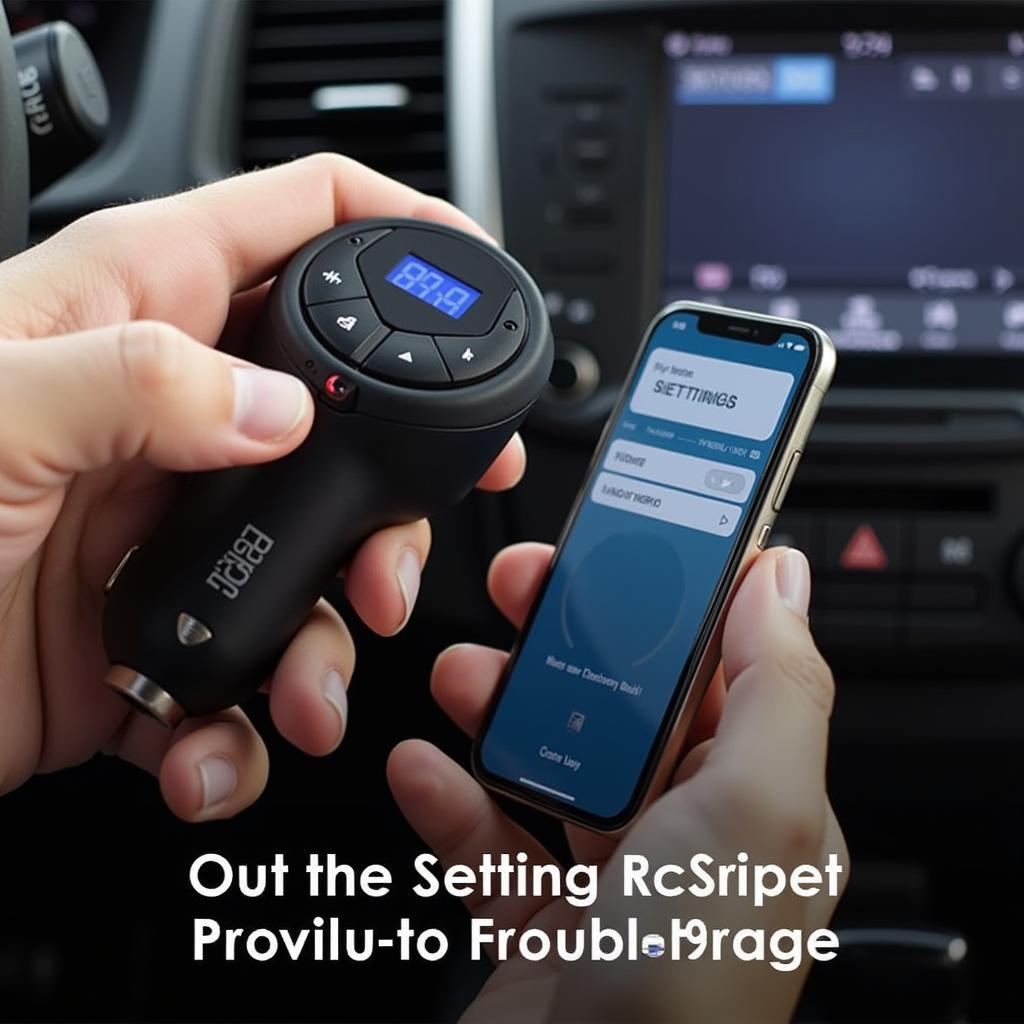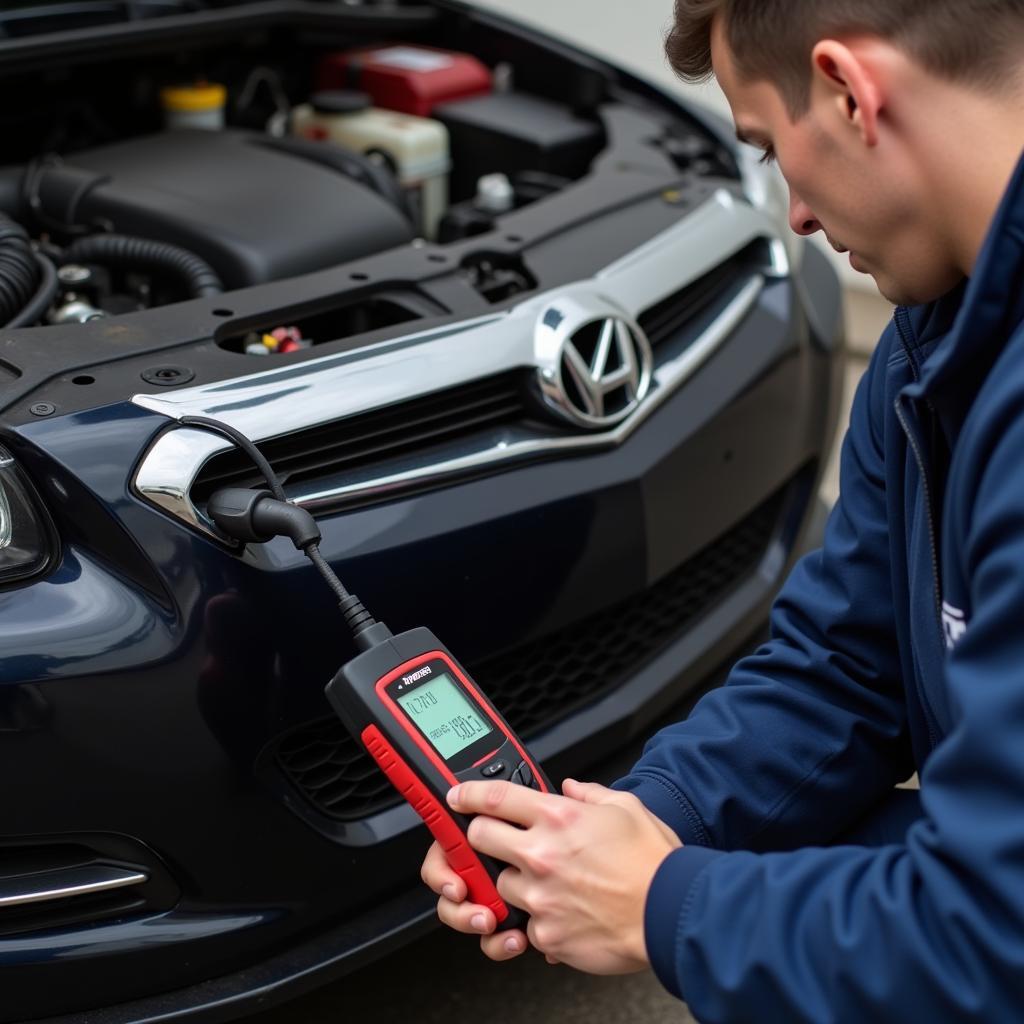The brake warning light on your 1997 F350 illuminating when you press the brake pedal can be a concerning issue. It indicates a problem with the braking system, and it’s important to address it promptly. This article will guide you through troubleshooting common reasons for this issue and how to resolve them.
Identifying the Cause of the Brake Warning Light
The brake warning light on your 1997 F350 is triggered by a variety of factors, and it can sometimes be confusing to identify the culprit. Let’s break down the potential causes:
Low Brake Fluid
One of the most common reasons for the brake warning light to come on is low brake fluid. Brake fluid is essential for maintaining brake pressure and should be regularly checked. Low fluid levels can indicate a leak in the brake system, requiring immediate attention.
- Expert Tip: “Always check your brake fluid levels regularly,” advises John Smith, a certified automotive technician. “Low fluid levels can lead to brake failure, so it’s essential to address this promptly.”
Worn Brake Pads or Rotors
As brake pads wear down, they become less effective at stopping your vehicle. When the pads wear thin, the brake system sends a signal to the warning light. Similarly, worn brake rotors can also contribute to the issue.
- Expert Tip: “Regular brake pad inspections are crucial to ensure safe braking,” says Sarah Jones, an experienced automotive repair specialist. “Worn pads can compromise your braking performance and lead to dangerous situations.”
Faulty Brake Light Switch
The brake light switch is a small component that activates the brake lights when you press the brake pedal. If this switch malfunctions, it can cause the brake warning light to illuminate, even when the brake pedal is not pressed.
ABS System Malfunction
The Anti-lock Braking System (ABS) helps prevent wheel lockup during braking. A malfunction in the ABS system can trigger the brake warning light. This issue usually requires a diagnosis by a professional mechanic.
- Expert Tip: “The ABS system is complex and requires specialized tools for diagnosis,” explains David Miller, an expert in ABS system repair. “If you suspect a problem with your ABS, it’s best to consult a qualified mechanic.”
Diagnosing the Problem
Identifying the root cause of the brake warning light requires careful inspection and troubleshooting. Here’s a step-by-step guide:
-
Check the Brake Fluid Level: Locate the brake fluid reservoir (usually near the engine compartment). Ensure that the fluid level is within the “Full” mark. If it’s low, top it off with the correct brake fluid.
-
Inspect the Brake Pads and Rotors: If the brake fluid level is adequate, inspect the brake pads and rotors for excessive wear. Use a flashlight to examine the pads’ thickness. If they are worn thin, they need replacement. Additionally, check for signs of warping or cracking in the rotors.
-
Test the Brake Light Switch: Press the brake pedal and visually inspect the brake lights. If they don’t illuminate, the brake light switch might be faulty.
-
Consult a Professional: If you’re unable to diagnose the issue or suspect a problem with the ABS system, consult a certified mechanic. They can use specialized tools and diagnostic equipment to pinpoint the problem.
Addressing the Issue
Once you’ve identified the cause of the brake warning light, you need to address it promptly:
-
Replace Brake Fluid: If the issue is low brake fluid, top off the reservoir with the correct fluid. However, if you suspect a leak, you’ll need to locate and repair the leak before refilling the reservoir.
-
Replace Brake Pads or Rotors: If the pads or rotors are worn, they need to be replaced. It’s also a good idea to have the rotors inspected and resurfaced if needed.
-
Replace Brake Light Switch: If the brake light switch is faulty, it needs to be replaced. This is a relatively simple repair that can be done by most DIY enthusiasts.
-
Repair ABS System: If the problem is with the ABS system, it will likely require specialized diagnosis and repair by a qualified mechanic.
FAQs
Q: Is it safe to drive with the brake warning light on?
A: It’s not recommended to drive with the brake warning light on. It indicates a potential problem with your braking system, which can compromise your safety.
Q: What if the brake warning light comes on intermittently?
A: Intermittent brake warning light can be a sign of a loose connection or a minor issue. It’s still essential to address it as soon as possible to prevent it from becoming a major problem.
Q: Can I fix the brake warning light myself?
A: While you can perform some basic troubleshooting like checking brake fluid levels, it’s recommended to consult a mechanic for more complex repairs, especially if you’re not comfortable working on your vehicle.
Q: How often should I have my brakes inspected?
A: It’s generally recommended to have your brakes inspected every 6 months or 5,000 miles, whichever comes first. However, if you notice any changes in braking performance or hear unusual noises, you should have your brakes inspected immediately.
Q: How much will it cost to fix the brake warning light?
A: The cost of fixing the brake warning light can vary depending on the cause and the complexity of the repair. For minor issues like low brake fluid or a faulty brake light switch, it can be relatively inexpensive. However, more complex repairs like replacing brake pads and rotors or fixing the ABS system can be more expensive.
Remember, addressing the brake warning light promptly is crucial for your safety and the longevity of your vehicle. If you’re unsure about the issue, always consult a professional mechanic for diagnosis and repair.



